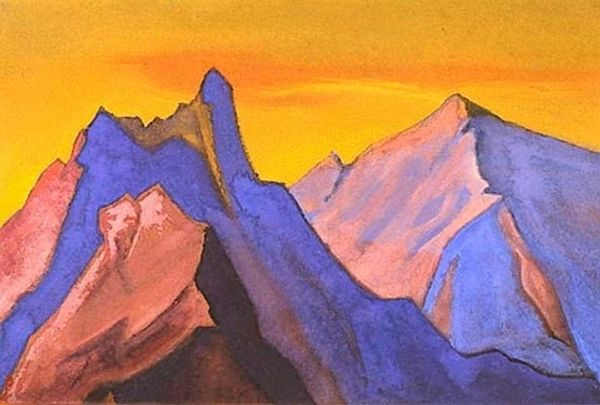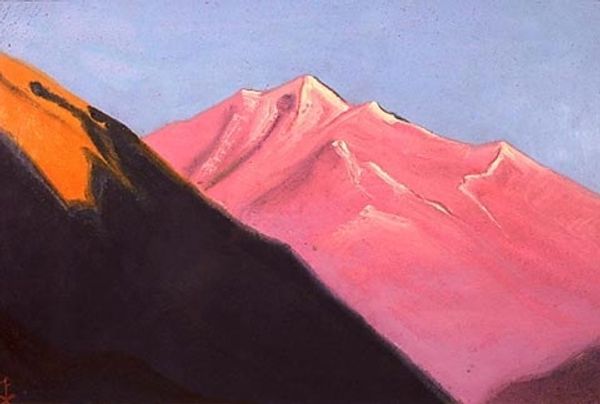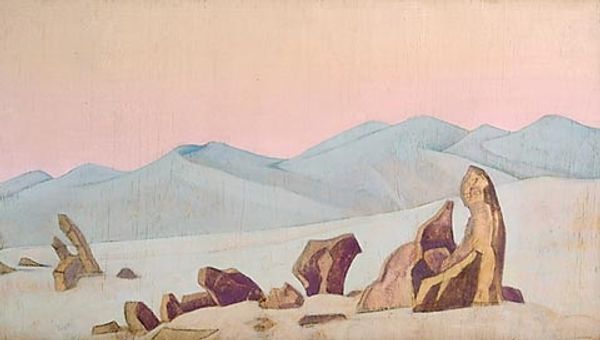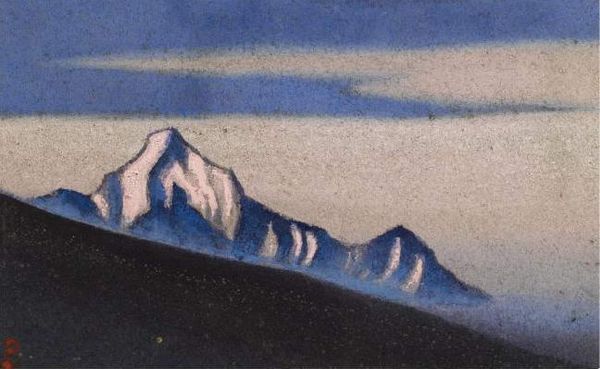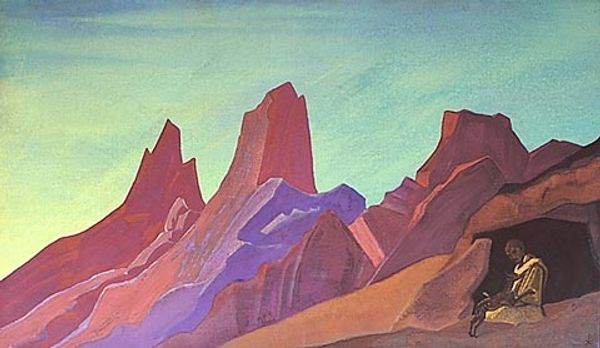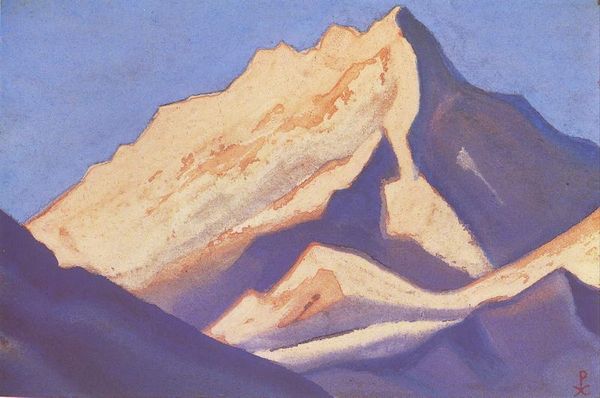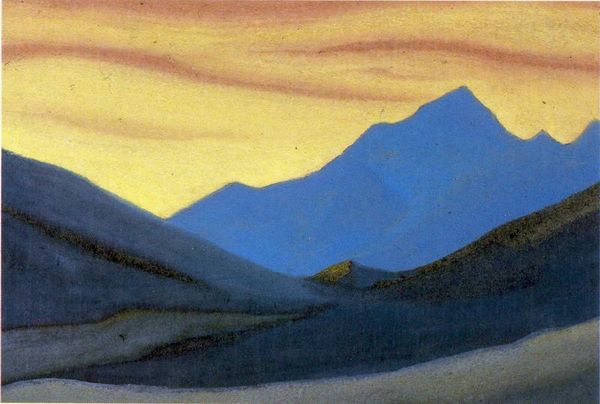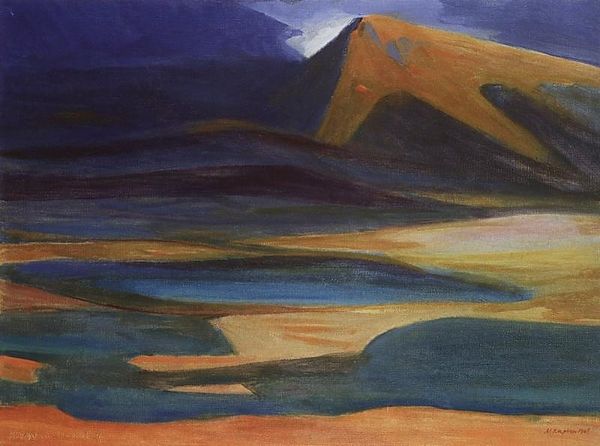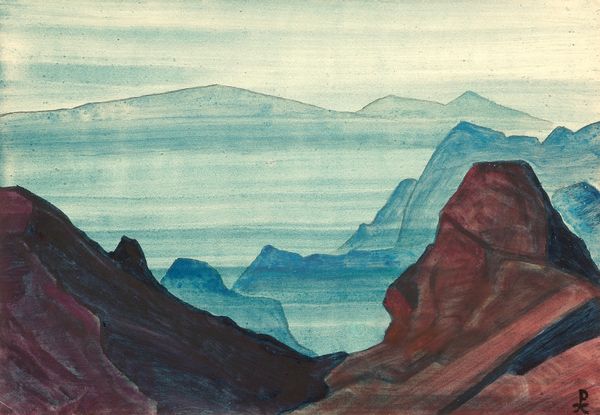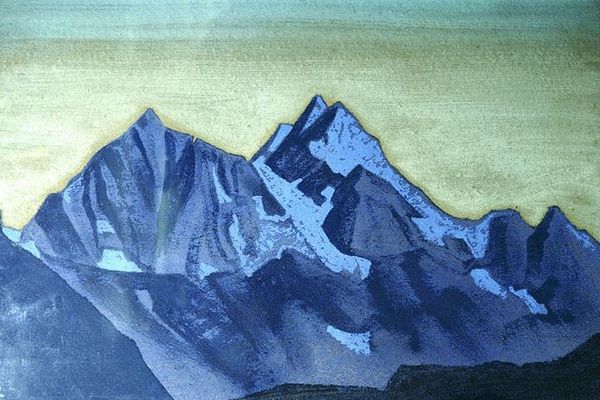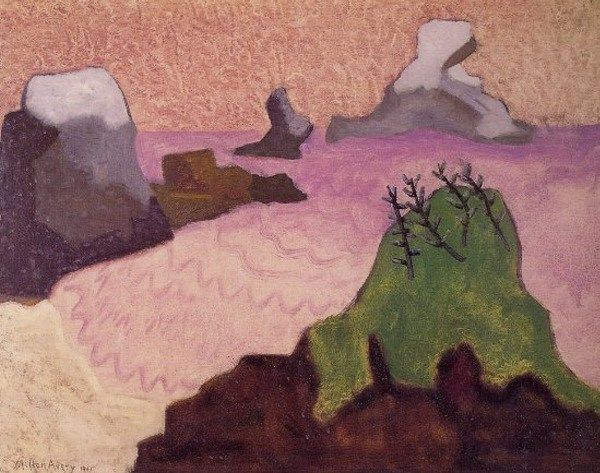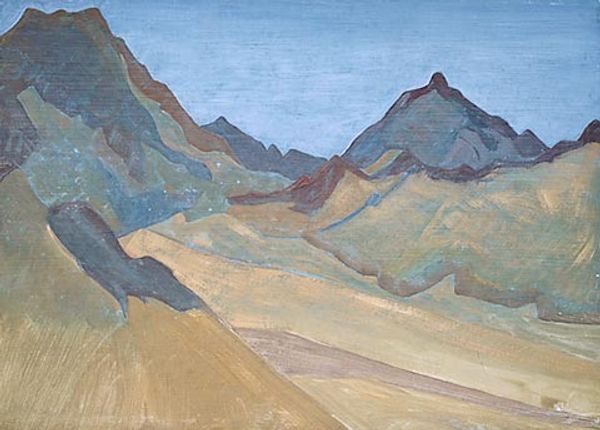
Copyright: Public domain
Editor: Here we have Nicholas Roerich’s "Santa-Fe" from 1921, rendered in oil paint. I am immediately drawn to the muted tones, contrasted by these bursts of terracotta red on the peaks. What visual language do you see at play in this piece? Curator: Note how the mountains, rendered in earthy browns and greys, seem to almost slumber under a hazy, golden sky. But then our eye is drawn to the fiery red crests. These likely symbolize spiritual energy, aspiration, or even sacrifice – a fiery connection to the heavens. Notice how they appear as crowns. Consider: are they naturalistic, or idealized forms, suggesting more about inner experience? Editor: I see what you mean. It almost feels like Roerich isn’t just depicting the landscape, but also imbuing it with some deeper symbolic weight. Curator: Precisely! The choice of colours and form creates an interplay between the earthly and the transcendent. Also observe, he was deeply influenced by Theosophy, a movement blending Western and Eastern spiritual traditions. Perhaps the peaks serve as visual metaphors, or as mandalas – focusing points for spiritual contemplation. What kind of feelings does it create for you? Editor: That makes sense! Now, looking again, I notice the starkness of the landscape and I feel this longing for something more, some sort of deeper understanding of the natural world. It really transcends the simple depiction of a landscape. Curator: Indeed. Roerich uses Santa Fe and its surrounding areas as a cultural metaphor for human transcendence by layering in rich cultural symbols that evoke more than surface reality. Hopefully, more visitors are now encouraged to ask, 'what is our relationship to place, memory and the cultural past'?
Comments
No comments
Be the first to comment and join the conversation on the ultimate creative platform.
